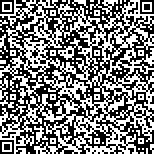下载中心
优秀审稿专家
优秀论文
相关链接
摘要

遥感技术是活动断层研究的重要技术手段之一。美国锁眼侦查卫星(Keyhole,简称KH)于20世纪60年代开始运行,在中国拍摄了大量的影像数据,具有成像时间早、分辨率高的特点。该影像较好地保存了东部地区城镇化建设之前的原始地形地貌信息,可以有效地揭示现今影像无法呈现的构造地貌特征,从而完成活动断层及微地貌的精细化填图与定量化分析,是活动断层调查的重要资料来源。本文首先简要介绍了KH卫星数据的基本信息及处理流程,其次论述了KH卫星影像的优势及其在活动断层研究中的初步应用,最后以郯庐断裂带江苏段为例,开展了基于KH卫星影像的活动断层遥感解译工作。试验结果表明,郯庐断裂带江苏段在试验区内仅马陵山—重岗山分支断裂(F5)、新沂—新店分支断裂(F2)断续出露地表,两条断裂的构造微地貌极为发育,为高角度逆冲断层,走滑运动不明显。KH卫星影像记录着上世纪至今大量的瞬时影像信息,为研究和理解活动构造相关地质构造、构造地貌、最新的地貌演化与历史变迁提供了更精确的基础数据,这些影像资料在活动构造研究领域乃至其他行业都具有重要的应用价值。
Remote sensing technology has become an important technique of active fault research because of its macro, intuitive and non-contact advantages. With the rapid development of remote sensing technology, the increasement of satellite sensors and the improvement of spatial resolution, a various data of satellite sensors at home and abroad have been widely used in active fault research. Foreign satellite data mainly include ALOS, IKONOS, SPOT, QuickBird, Worldview and so on, among which the spatial resolution of QuickBird is 0.6 m, Worldview up to 0.31 m. Domestic satellite data include GF-1, GF-2 and ZY3, where the spatial resolution of GF-1 multispectral band and panchromatic band is 8 m and 2 m respectively; the spatial resolution of ZY3 multispectral band and panchromatic band is 5.8 m and 2.1 m respectively; the spatial resolution of GF-2 multispectral band and panchromatic band is 4 m and 1 m respectively.
In recent decades, the rapid development of urbanization and human activities have seriously destroyed natural landforms. Especially in the eastern part of China, natural landforms have been seriously damaged due to the construction of roads, railways, factories and houses, so that tectonic geomorphology no longer existed, which made a great difficulty for remote sensing interpretation of active tectonics. US Keyhole(KH) satellites began to run in the 1960s, taking a large number of images in China. KH images are characterized by early imaging time, high resolution and better original terrain information, so they can be effective to obtain the characteristics of tectonic geomorphology and determine the geometric distribution and fault behavior. Those are significant for active fault research.
In this paper, the basic information and data processing flow of KH satellite is introduced firstly. KH satellite mainly include KH1-12 and other 12 models. KH1-6 is the recoverable reconnaissance satellite of photographic film. The data source of KH1-6 is basically open, which is the main application of the promotion model. The best resolution of KH4A, KH4B and KH6 is 2.7 m, 1.8 m and 0.3 m respectively. Secondly, the application of KH images in active fault is discussed: 1) For the tectonic landform of active fault, with the advantages of early imaging time and high resolution, KH images can obtain the tectonic micro- landform features of active fault such as linear structure, fault scarp, fault cliff, fault groove and channels offset, which can not be identified by current satellite images. They are helpful to complete the precision mapping and quantitative analysis of active fault; 2) For the surface rupture zone of a historical earthquake, the KH images photographed at the nearest time after the earthquake is useful to map the surface rupture of the earthquake and measure the coseismic displacement. KH images visualize the post-earthquake rupture information to reveal the relationship between the rupture and the active fault, which guides us to understand the seismogenic structure, seismogenic mechanism and the process of diastrophism. Finally, this paper take the Jiangsu section of the Tan-Lu Fault Zone(TLFZ) as an example. The Suqian city and surrounding area were selected as the test area, where the remote sensing interpretation of the active fault based on KH-4B satellite image was carried out. The results show that, Malingshan-Chonggangshan Fault(F5) and Xinyi-Xindian Fault (F2) intermittently exposed to the surface. The tectonic micro-landforms of the two faults are very developed. In the Huangchaoguan, Shanxiawu and the south of Xiaodian, F5 exposed to the surface, which formed fault cliff, fault triangular surface, fault scarp and other structural landform. In the west of Huangchaoguan, F2 intermittent exposed to the surface, which formed fault scarp, fault deflection, fault groove and other tectonic micro-landforms. There are no obvious dislocations in the gully of the two faults. The two faults are mainly dip-slip movement with high angle thrust motion.
KH satellites have obtained a large number of instantaneous image data from the last century, and recorded the process and evolution of the Earth's surface for a period of time. These images have important application values in the field of active fault research. In order to study and understand the geological structure, tectonic landforms and the latest historical changes, the KH images provide more accurate basic data. How applying KH images to active fault mapping work and seismic hazard assessment is an important development direction in active tectonics research in the future. What is more, It is hoped that, except in the earthquake industry, KH satellite data will be widely used in the fields of forestry, fishery, surveying and mapping, engineering, electric power, and other industries.

